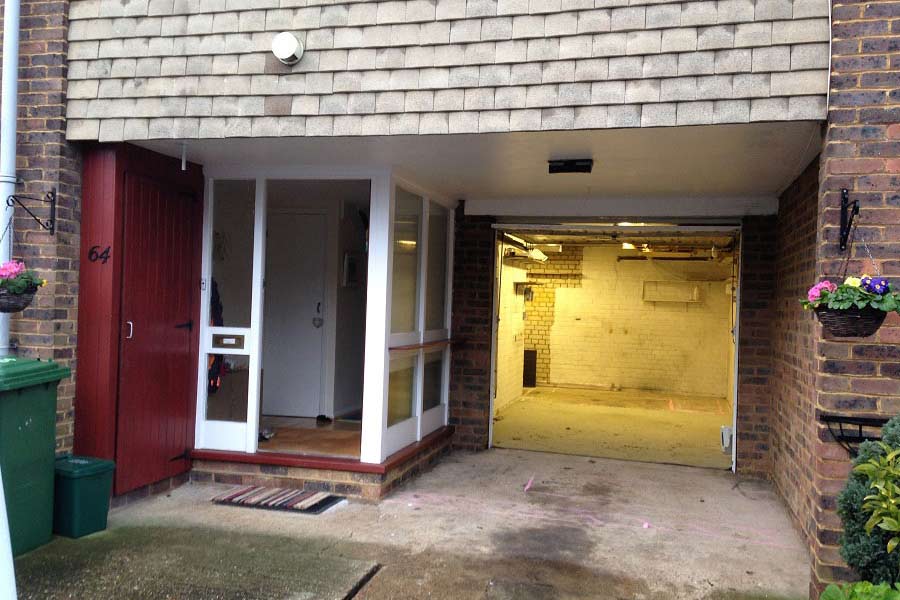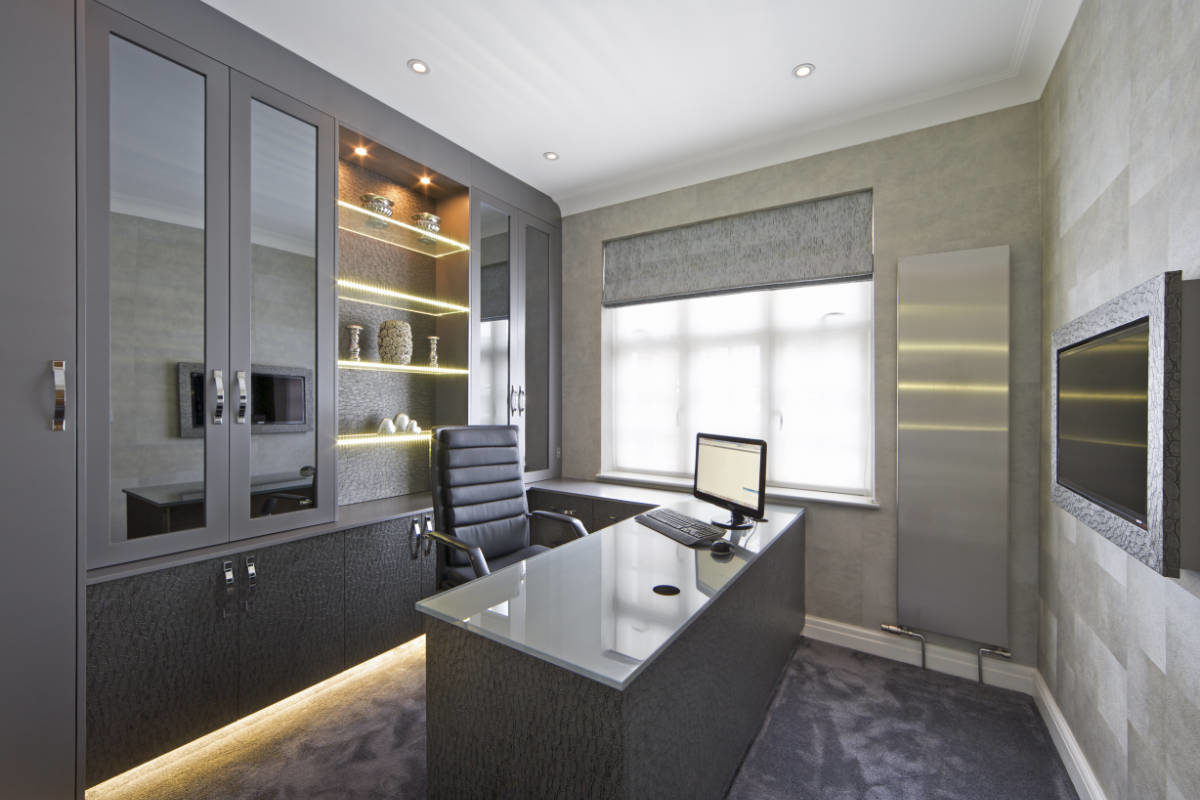Pre-pandemic, a private home office was a luxury most homeowners didn’t have or need – but in a new work-from-home environment, it’s now far more of a necessity for millions of people who spend at least a proportion of their working week remotely.
Dusty, unused garages present a golden opportunity to reimagine the usage of this space and turn it into a valuable, comfortable room that will add value to your property and give you a quiet zone to get on with your work.
In this guide, the Bi-Fold Doors UK team runs through our top tips for achieving a great conversion and how to design your home office to provide maximum benefit.
Why Convert a Garage Into a Home Office?
There are many ways to incorporate a home office into your property, such as:
- Converting the attic
- Repurposing a spare room
- Building an extension
- Constructing a garden office
However, garages are a great option since it is considerably cheaper to convert this space than build something new, and you don’t sacrifice bedrooms or garden size to meet your work requirements.
Another excellent advantage of using a garage for a home office is that you can be close to home if you need to nip indoors but have a degree of separation with a quieter space away from the chaos of family life!
Millions of homes have garages that are either too small for modern cars, awkward to open and close, and used primarily for storage, so with some imagination, you can work wonders!
A single-car garage has around 15 square metres of space, or a double is a generous 30 metres square on average, so you could even build an en suite or retain some of your storage space, with plenty of capacity for a work desk.
Professional Advice for a Garage/Home Office Conversion
If you’re sold on the idea, let’s look at some of our tips and things we’d recommend you consider before you begin planning your stylish new workspace!


Structural Integrity
It’s best to have a surveyor or architect come and take a look at your garage if it’s an older building or hasn’t been subject to survey for a few years.
They’ll inspect the roof, foundations and walls and confirm whether you need any preparatory work to ensure the garage is safe and suitable for conversion.
One alternative is to demolish an old, rickety garage and rebuild something new, which will normally be more economical than constructing a new extension on another part of your property.
Garages don’t tend to have insulation, so they are often single-skin brick walls. You can add another layer of insulation to the roof, floors and walls, and then apply plasterboard and decorations to make it a warm room with sufficient airflow.
Connecting the Garage to Your Utilities
At a minimum, you’ll want to have an electricity supply running to the new office, which is essential for lighting and powering your appliances.
You can also run piping from your central heating system and fit a radiator to the wall, or go for an electric heating system, which may be preferable.
If you have a large garage and want an accessible bathroom or a sink for topping up your coffee, you’ll also need a plumber to ensure you have hot and cold water running to the new office space.
It’s wise to create a drawing of your intended layout so you can plan lighting and electrics (more on natural light next!).
Think about:
- Power points for a desk, phone, charger and computer.
- Overhead or desktop lighting (especially for the winter).
- Wall-mounted electrical heaters or allocating space for a radiator.
We’d also suggest having a good look around the garage to check for fuse boxes, boilers or electricity meters – it’s often easiest to box them in rather than relocating boilers.
Still, you’ll also need proper ventilation and a CO2 alarm if you share an office with a boiler cupboard.
Lighting for a Garage Conversion
If your garage is like most, you’ll have one or two small single-glazed windows or none at all – this needs to change, so you have enough natural light and ventilation to make your converted garage a pleasant place to work!
There are all sorts of options:
- Sliding doors or bi-fold doors are a fantastic option and can flood the home office with sunlight and ensure it is a cosy spot to work in every season.
- Double-glazing is advisable and will ensure your home office doesn’t leak heat from the rest of your property in colder weather.
- Overhead lighting is essential for darker afternoons and early mornings, or you can opt for a roof lantern to provide a contemporary feel and avoid straining your eyesight.
You might also opt for specialist glass such as privacy films or UV reflective treatment, depending on whether your garage is positioned at a visible spot to the front of your property and the aspect it faces.
Garage doors should always be replaced with a secure window or entrance system, with good standard locks, as you’d expect on any other external access point of your home.
Planning Permission
Depending on the position of your garage, where you live, and the conversion size, you might be able to convert the space under permitted development rights, which means you don’t require full planning permission.
A lot depends on the planning rules managed by your local planning office and whether the conversion will impact available parking.
We’d recommend checking with the planning authority before work begins. If you require approval, you’ll need to apply with drawings to demonstrate what the finished conversion will look like.
In most cases, you’ll need approval if you plan to brick over the old garage door space. Where your garage has a shared wall with your neighbours, you’ll need a party wall agreement.
Building Regulations for a Garage Conversion
Building regulations differ from planning permission and apply to all construction work on your property.
That involves submitting a Building Notice to your local authority, who will arrange for an inspector to sign off the work when it has finished, confirming that your home office is:
- Structurally safe
- Damp proof
- Sufficiently insulated
- Ventilated
- Fire-proof to national standards
- Compliant with energy efficiency regulations
An experienced contractor may be able to self-certify that their work meets the regulations if they have the appropriate accreditation.
Adding Value to Your Property
While your conversion might be primarily to allow you a peaceful area to work from, it’s also worth considering whether the work will alter the market value of your home.
In some built-up city areas, off-road parking adds a premium, so converting your garage may not be a good idea if you do not have a driveway and would need to apply for an expensive parking permit.
However, in most cases, a dedicated home office is a favourable feature and may add a surprising amount to the saleable value of your property.
Partial Garage Conversions
Finally, we talked earlier about the potential to convert part of a larger garage and use the rest of the space for storage or another purpose.
Where your garage has enough capacity to incorporate an office and a secondary space, you can split this with a partition wall or keep a secure parking area for your car while reducing the garage size to accommodate a home office next door.
Planning to Convert a Garage Into an Office
Following these steps will ensure you have a well-planned conversion project, and you can look forward to your new working space with confidence that it’ll meet all your requirements.
If you would like further information about your conversion, replacing garage doors with wide-panel glazing, or fitting a sleek sliding door to develop an airy, bright and productive home office, please contact Bi-Fold Doors UK at your convenience!

